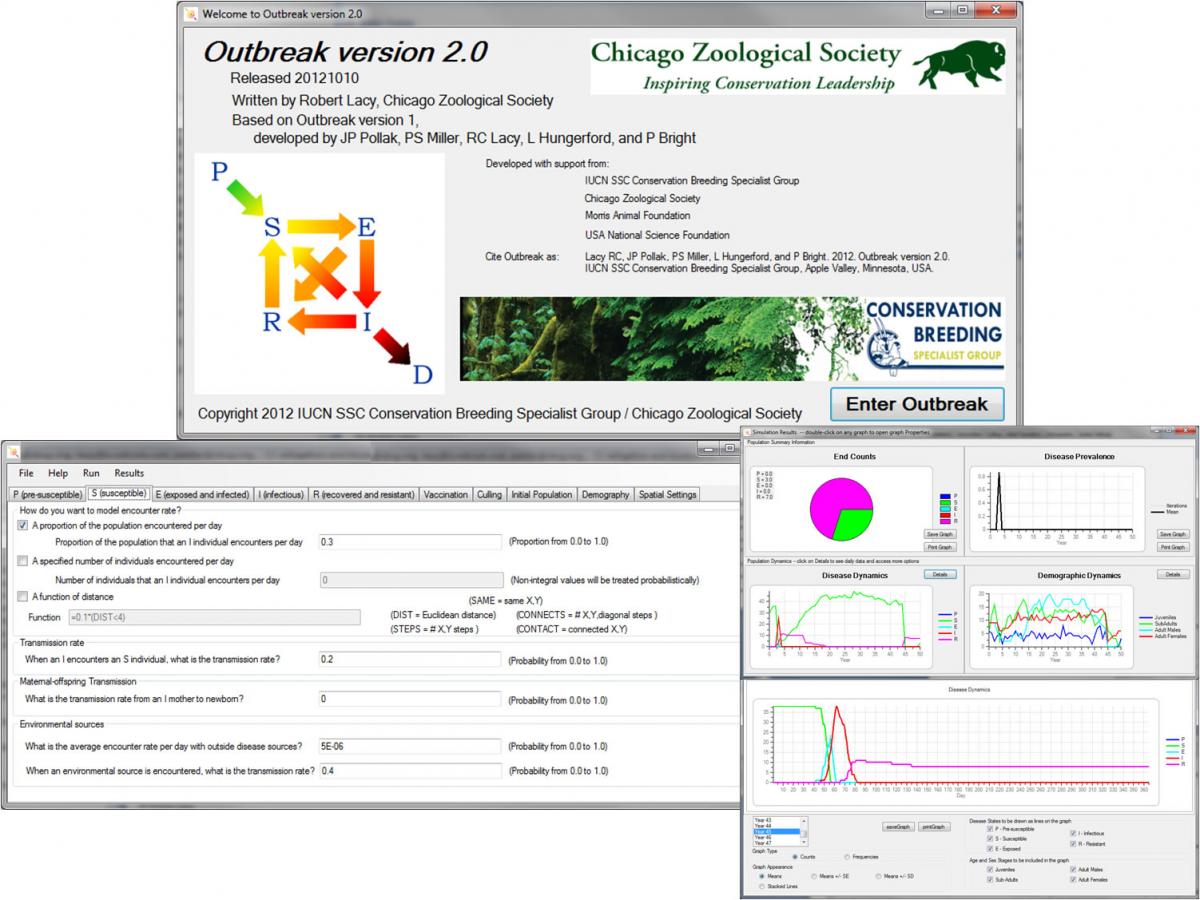Outbreak simulates SEIR-style disease dynamics, using familiar basic conceptual algorithms of infectious disease transmission. The prevalence of infectious disease in wildlife populations is dependent on the number of individuals already infected, as well as on the numbers of susceptible and exposed individuals. To model infectious processes, the state of each individual in the population is tracked, and the probabilities of transition among states are specified as functions of the number of individuals currently in each state and of other relevant parameters such as contact rate and the latent period of infection. All disease parameters are input by the user, allowing for customization of disease epidemiology. In addition, demographic information such as breeding rates and non-disease mortality for general sex-specific stages (juveniles, sub-adults, and adults) is user-specified and used to project total population size. Along with basic disease analysis, the user may include vaccination and culling as a means of managing disease dynamics in the population.
The mathematical algorithms run on a simulated daily time-step in order to model the details of disease transmission dynamics. Multiple iterations of a given dataset are used to generate mean population characteristics as model output for analysis. Model output across multiple scenarios include real-time graphical depictions of metrics such as the relative mean proportion of the population within a given disease state, mean population size, etc.
The Outbreak software is maintained by the Species Conservation Toolkit Initiative (SCTI). For more information, and to download the most recent version of Outbreak, visit the SCTI website here.
Back to Science-Based Tools.


